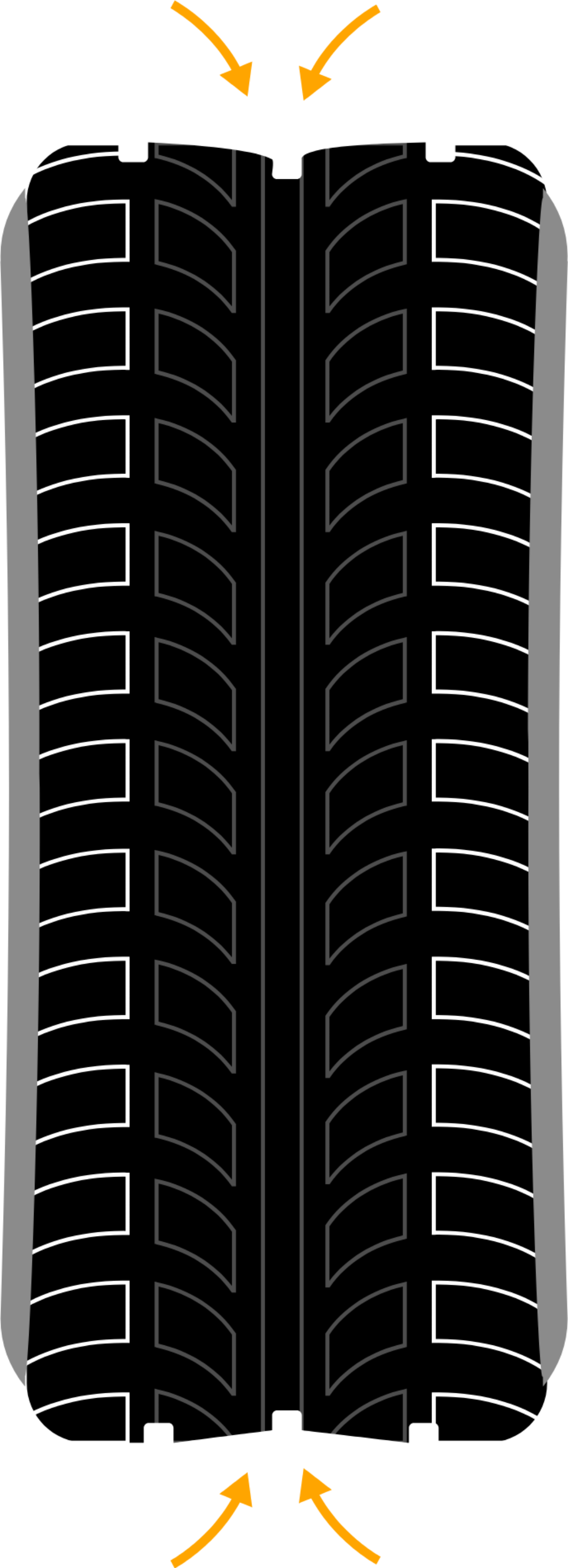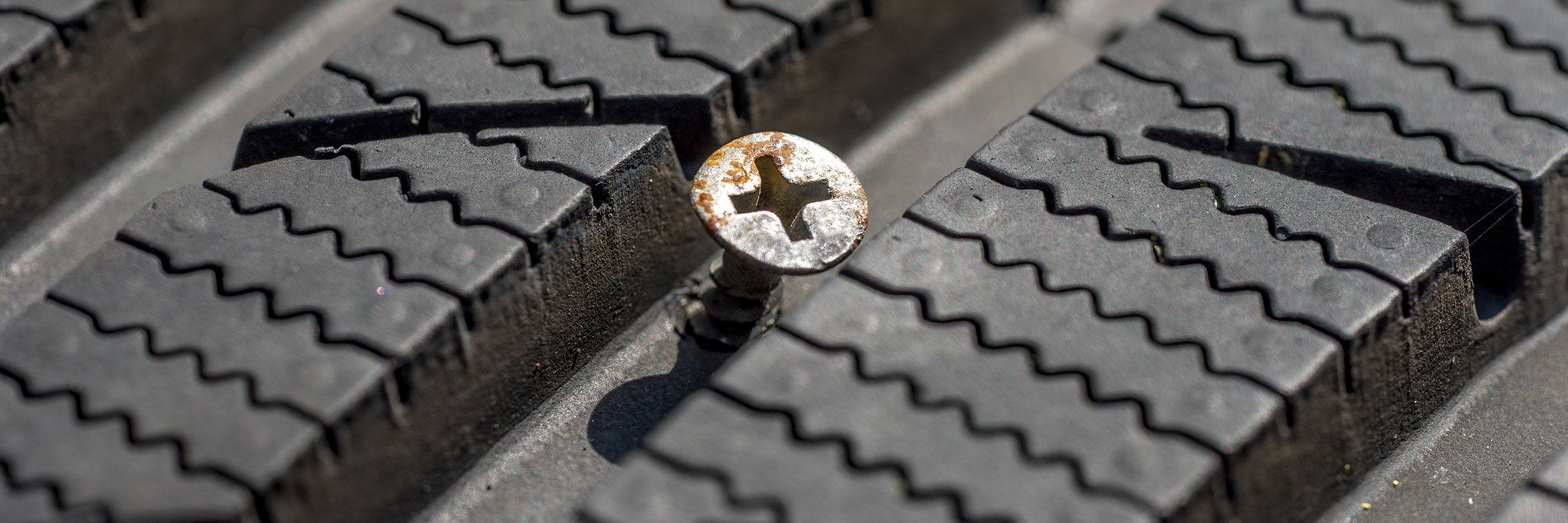
# Tyre Damages and Age
Replacing tyres
Things to know about the age of your tyres
A frequent question about tyre maintenance concerns service life. How long will your tyres last before you should replace them?
The answer depends on different factors such as your driving style, the tread design of the tyre, regional climate, road conditions, and how frequently the car is in use.
Another factor is you, the driver. Just like the rest of the vehicle, you have an essential role in the care and maintenance of the tyres on your wheels; they will last longer the better you look after them. You're also responsible for deciding when it's time to replace worn tyres with new tyres.
Use the following guidelines to assess the point of maximum service life for your tyres. If you still have questions beyond this article, try consulting a professional at your local tyre retailer; they'll be more than happy to help.
Taking care of tyres to extend their life
We build and design our tyres to provide thousands of miles of excellent service. Achieve maximum benefit from your tyres by taking care to avoid damage from improper use that may shorten their lifespan.
The conditions that you subject your tyres to over the course of daily use – inflation pressure, load, speed, road hazard injury, and so on – are key to determining service life. So too, is regular rotation and proper storage of your tyres. But since service conditions vary widely from car to car and driver to driver, to apply universal predictions on how long a tyre will last is impossible.

However, you can be proactive and increase the longevity of your tyre through proper maintenance. To avoid prematurely buying replacement tyres, things to consider include:
- Checking tyre pressure regularly;
- Rotating evenly between the rear and front tyres, left and right depending on tread pattern;
- Maintaining proper wheel and axle alignment;
- Checking treadwear (1.6 mm is the legal limit);
- Inspecting tyres for visible wear or damage;
- Paying attention to ride quality while driving.
Checking for tyre age
Here's a simple tip to determine the age of your tyres; it's written on the sidewall! You can calculate the physical age of any car tyre by examining the markings on the tyre sidewall following the “DOT” symbol:
- The last four numbers denote the fabrication date of the tyre to the nearest week.
- The first pair of these four numbers identifies the date of manufacture down to the nearest week (which range from “01” to “53”).
- The last pair of numbers specifies the year of manufacture.
For example, a tyre with a DOT of XXXXXXX2714 has a manufacture date from the 27th week of 2014.

Some points to note about older tyres
Be aware of the following when you inspect your sidewall markings:
- Tyres produced before the year 2000 have three numbers instead of four to indicate the production date of the tyre.
- In the 1990s, we added a triangle (◄) to the end of the character string. The reason for this is to distinguish a tyre built in the 1990s from one fabricated in previous decades.
As an example, a tyre with the information “DOT XXXXXXX274◄” was manufactured in the 27th week of 1994.

How many years will tyres last?
We are not aware of any technical data to support the removal from service of tyres past a specific age. But the same principle applies to the tyres of your vehicle as for any other part of your car – age matters.
Together with other organisations in the tyre and automotive industries, we advise that all tyres (including spare tyres) made more than ten years ago should be removed from service and replaced with new tyres.
You should follow this advice even if:
- The tyres seem to be in good condition and appear usable based on their external appearance;
- The wear to the tread has not passed the minimum legal limit.
In short, even though a tyre over ten years old may seem fine for driving, we still recommend getting new tyres for your car. Drivers cannot rely on visual inspection for rubber cracking, wear to the tread or other signs of deterioration due to age. While tyres may appear perfectly functional, their age is a factor for replacement.
Some vehicle manufacturers may recommend a different chronological age at which to replace a tyre. Such guidance comes from their understanding of the specific vehicle application; We recommend that drivers pay heed to these instructions.
In any case, most tyres will likely need replacement for worn treads or for other reasons before any recommended removal period. At the same time, a stated removal period in no way alleviates the driver’s responsibility to replace worn tyres when necessary.
Related content
-
 2024/10/16Tyre damagesTires can become damaged, and it can happen without the driver realizing there's an issue. We explain the signs and symptoms to help diagnose the problem.Read more
2024/10/16Tyre damagesTires can become damaged, and it can happen without the driver realizing there's an issue. We explain the signs and symptoms to help diagnose the problem.Read more -
 2024/07/18Tyre repairWant to repair a tire puncture? Drivers must know whether a repair on a flat tire is legally permissible, or whether they have to buy a new tire instead.Read more
2024/07/18Tyre repairWant to repair a tire puncture? Drivers must know whether a repair on a flat tire is legally permissible, or whether they have to buy a new tire instead.Read more